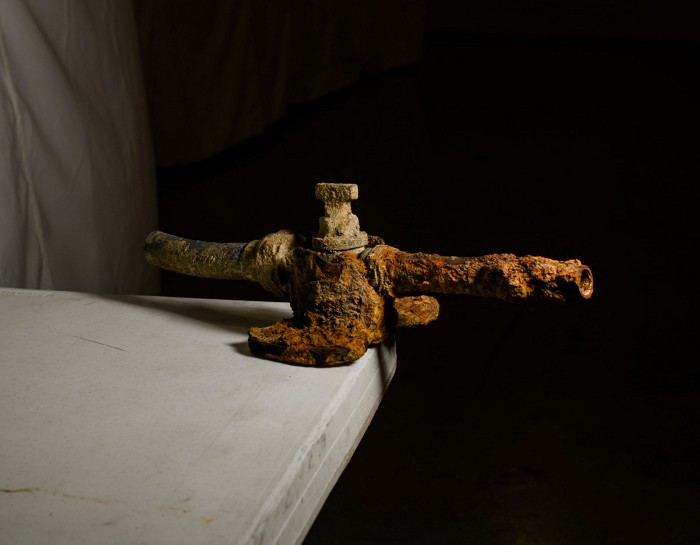Advertisement
Grab your lab coat. Let's get started
Welcome!
Welcome!
Create an account below to get 6 C&EN articles per month, receive newsletters and more - all free.
It seems this is your first time logging in online. Please enter the following information to continue.
As an ACS member you automatically get access to this site. All we need is few more details to create your reading experience.
Not you? Sign in with a different account.
Not you? Sign in with a different account.
ERROR 1
ERROR 1
ERROR 2
ERROR 2
ERROR 2
ERROR 2
ERROR 2
Password and Confirm password must match.
If you have an ACS member number, please enter it here so we can link this account to your membership. (optional)
ERROR 2
ACS values your privacy. By submitting your information, you are gaining access to C&EN and subscribing to our weekly newsletter. We use the information you provide to make your reading experience better, and we will never sell your data to third party members.
Environment
Newscripts
Insects and excrement: Tales of teamwork and technology
by Krystal Vasquez
March 25, 2024
| A version of this story appeared in
Volume 102, Issue 9
Dung beetles’ love language

Good communication and cooperation aren’t just important for healthy human relationships. They’re invaluable to dung beetles as well. A recent study found that some dung beetle species work together in male-female pairs to move their prized dung balls over obstacles as they search for somewhere to lay their eggs (Proc. R. Soc. B 2024, DOI: 10.1098/rspb.2023.2621).
For dung beetles, poop can serve multiple purposes. It can be a tasty meal or a larva nursery, also known as a brood ball. For the latter, dung beetles tend to pair off and then roll the poop into more manageable-sized spheres and push them to safer locations before laying their eggs in them. In most cases, however, “the male is doing all the work,” says Claudia Tocco, a biologist at Lund University and one of the study’s authors. The female, meanwhile, usually just follows behind or “uses the ball like a taxi,” she tells Newscripts.
But Tocco and her colleagues noticed that two dung beetle species—Sisyphus fasciculatus and Sisyphus schaefferi—prefer a more even division of labor. Like other dung beetles, the Sisyphus females don’t contribute much when the male is rolling the ball over flat ground. However, as soon as the couple comes across an obstacle like a tree root or—in the case of the study—plywood rings of varying heights, the female springs to action.
When the male begins to pull the brood ball over the challenging terrain, the female places herself under the ball and pushes it upward in a motion that Tocco says looks like a one-arm handstand. While pushing, the female beetle also stabilizes both the ball and her male partner so that neither comes tumbling back down.
What makes this collaborative effort even more interesting, Tocco says, is that the male and female are working together despite not having a set destination in mind. Unlike ants, the dung beetles pair roll their prize away from the dung pile first and work out the details later.
It’s almost as if the male and female Sisyphus beetles have silently agreed to trust each other—the female trusts that the male will navigate to a good nesting site, and the male trusts that the female will support him along the way.
Aside from the poop, it sounds kind of romantic. Maybe humans could learn a thing or two from these fascinating insects.
Cicada pee in the forecast

People living in the southern and midwestern US might want to avoid looking up when standing under a tree this spring. In a rare event, two broods of cicadas will simultaneously emerge from the ground and take to the branches overhead, where they’ll inevitably expel powerful jets of pee that will shower anyone below.
According to a new study, cicadas urinate in a powerful stream, which researchers previously believed to be impossible for an insect their size (Proc. Natl. Acad. Sci. U.S.A. 2024, DOI: 10.1073/pnas.2317878121). Scientists once thought that only animals weighing over 3 kg produced jets of urine. However, for insects, it’s usually energetically more favorable to pee in droplets because of surface tension, says Saad Bhamla, a biophysicist at the Georgia Institute of Technology and one of the study’s authors.
While on an unrelated field study in Peru, Bhamla and Elio Challita, a biophysicist now at Harvard University, observed the cicadas breaking this rule.
Bhamla and Challita believe that cicadas are capable of using this unique peeing style due to their large size relative to other insects—some of these bugs are bigger than hummingbirds. From the second they emerge, cicadas are also on a mission to drink tons of nutritionally poor sap. “They have to process huge amounts [of sap] to get enough energy out,” Bhamla tells Newscripts. Pee jets help the cicadas process these large volumes of food.
But why do we care how cicadas pee? Because cicadas can inspire new technologies, especially in microfluidics, Bhamla says. Cicadas are “a tiny package with a lot of pumping capabilities and energetics.” But more than that, cicadas’ unique urination style adds yet another interesting fact about an animal that scientists still know very little about. “They have so many enigmas. We just added one more to the list,” Bhamla says.
Please send comments and suggestions to newscripts@acs.org.





Join the conversation
Contact the reporter
Submit a Letter to the Editor for publication
Engage with us on Twitter